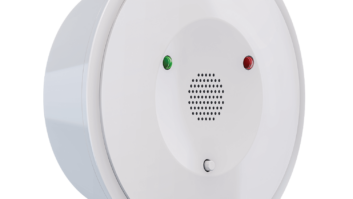Fact: I’m really not very handy around the house. I’m utter rubbish when it comes to finding things, I do the bare minimum of yard work to keep the POA from sending me letters (and by “bare minimum” I mean “write a check to the guy that cuts my grass and breaks my sprinkler heads”), and I don’t at all enjoy “tinkering.” Really, unless the problem is, “Why is there no sound on the TV?” or, “Should this be a comma or a semicolon?” I’m truly not much help at all.
Honestly, if it wasn’t for the fact I like to play my movies and music at reference volume levels, leading previous neighbors to leave notes on my door reading, “You don’t live alone in a cabin in the woods! Turn it down!” then I would totally embrace the condo lifestyle.
But I like my obscenely loud volume levels and soul-quivering bass, and that necessitates owning a home. And owning a home means that I’m occasionally called upon to tackle projects around the house. These can be simple things like fixing a hinge on a cabinet door or changing a part on the pool’s chlorinator to repairing another sprinkler head the gardener has driven over again.
Last week, my daughter Lauryn’s toilet broke. The fill valve thingy that lets water in after a flush just stopped letting water through. Even though this elevated my typical toilet-related problem-solving skill set from plunger to something other than plunger, I still figured it would be no problem. In fact, I’ve already changed out this part a few times before, having mastered the arcane mysteries which lie beneath the toilet’s porcelain top. And serendipity! I even happened to have an extra toilet repair kit on hand!
So like a damn boss, I carefully removed the water out of the tank, put down a pan to catch the residual water, unscrewed the nuts and bolts, and dismantled the bad valve. As I was putting in the new valve and tightening everything and thinking what a toilet repairing rock star I was, I twisted a part at the supply line coming out of the wall and it immediately it started leaking. Like bad leaking.
This sent me running about on a quest to find my home’s water shutoff valve. Now, you might think that after living in a home for 12 years I should know right where the water shutoff valve is, and you may indeed be right on this point. But arguing about what I should have and shouldn’t have known regarding the location of the water shutoff valve was in no way helping to actually shut the water off.
I went outside my house to the box in my lawn labeled “Georgetown Water & Sewer” and turned all the valves I could find closed and then ran back in. I turned the water on in the bathtub to speed the draining water from the lines process, but after a couple of minutes of the water running full speed ahead—and the leak still leaking—it was clear I hadn’t shut off the correct valve.
So I whipped out my iPad and Googled, “How do I find my home’s water shutoff valve” (Also, I like how Google isn’t all hung up on punctuation, intrinsically knowing that I meant that as a question and not as say an exclamation.) After reading a few comments I was led to look by my water heater in the garage and there, hidden behind a Soloflex J-beam that has been the bane of Dana’s existence since she married me, is the valve. Voila! I killed it, confirmed that the leak had indeed stopped and then headed to Lowe’s where I purchased the two parts that I needed for the repair. (The $17 charge for the two such small items prompted the check-out lady to proclaim, “That’s disgusting,” which I must say really derailed the enthusiasm for my purchase. The joke was really on her, because the truth was, right then I’d have paid $100 to fix that stupid toilet!)
After a few minutes crouched behind the toilet with some adjustable pliers, my problem was solved and the toilet was ready to continue its miserable life’s work.
But the whole thing got me to thinking about how these kinds of solutions don’t really work for our clients or the systems we install. First, there’s no Google to find out what a receiver’s digital assignment should be set to, or which of the many installed cables does exactly what, or what input the receiver and TV should be set to, or why the TV doesn’t have any picture or sound. Second, the person likely wouldn’t have the specialty tools needed to go in and fix the problem, especially if any kind of programming were involved. Third, most of our clients are either intimidated by or just don’t want to be bothered with crawling in behind the toilet, so to speak.
This realization convinced me that custom integrators will never be so easily replaced by a Google search, that our knowledge really is our power, and how our customers should have a way to can reach out to us in the case of emergencies.
To our clients, having no TV can be a crisis akin to not being able to find the water shut-off valve. Granted, there will be no actual property damage and life will go on, but the perceived damage done in that kind of “emergency” can be to a relationship. Or, in the event of a party, where “that system you sold me isn’t working” becomes shared on a much larger scale, it can damage relationships yet to even happen.
We recently had a situation at our store where the customer’s central automation processor—responsible for not only controlling the AV system located on a separate floor but also lighting—just froze. Of course, this all happened during the college football opener with a house full of guests and rabid fans. After rebooting failed to resurrect the processor, my business partner went down after-hours on his off day to get the system up and running for the game while a replacement processor was overnighted in.
This is the kind of service that customers are willing to pay for and will continue to use and recommend you for. And you’re never going to be able to Google that.

John Sciacca is principal of Custom Theater and Audio in Myrtle Beach, SC.







